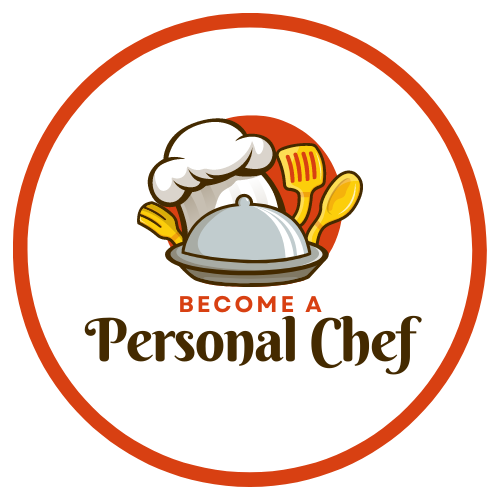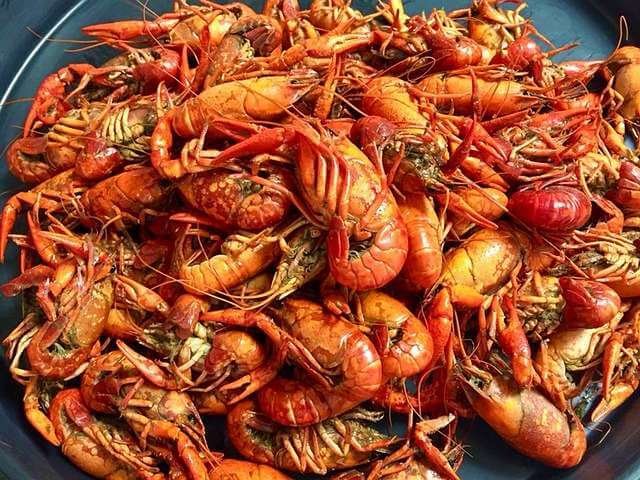Table of Contents
ToggleCajun and Creole Food For Personal Chefs
As personal chefs, we are on a constant quest for culinary discovery. Today, we’re journeying to Louisiana, home to the vibrant and flavorful Cajun and Creole cuisines. These two culinary styles, while distinct in their own right, share a common heritage rooted in the diverse cultural tapestry of Louisiana. And as personal chefs, it’s important for us to embrace and incorporate these rich traditions into our cooking.
Cajun cuisine is often described as “country food” and has its roots in the French Acadians who settled in Louisiana after being exiled from Canada in the 18th century. These hearty dishes are known for their bold flavors, thanks to the generous use of herbs, spices, and peppers. From gumbo to jambalaya, Cajun food is all about layering flavors and creating a harmonious balance between heat and richness.
On the other hand, Creole cuisine is considered more refined and evolved, with influences from not only French but also Spanish, African, and Caribbean cuisines. This fusion of cultures gave birth to iconic dishes like shrimp étouffée and red beans and rice. Creole cooking relies heavily on fresh seafood, vegetables, and aromatic spices.
Aspiring personal chefs need to offer something different than traditional chefs who specialize in one or two kinds of cuisines. I’ve written an extensive article with links to many cuisines for your consideration – World Cuisine for Personal Chefs
Key Ingredients in Cajun and Creole Cuisine
Cajun and Creole cuisines are known for their bold, spicy flavors and use of local ingredients. The key components include seafood (crab, shrimp, crawfish), Andouille sausage, white rice, red beans, and a variety of spices such as cayenne pepper. The backbone of many dishes is the “Holy Trinity” – a combination of bell peppers, onions, and celery. These ingredients are commonly found in both Cajun and Creole dishes, but there are subtle differences between the two cuisines.
Cajun Cuisine:
Cajun cuisine originated from French settlers who were exiled from Acadia (present-day Nova Scotia) in the 18th century. They settled in Louisiana and adapted their traditional French cooking techniques to include local ingredients such as seafood and spices from Native American and African cultures. As a result, Cajun cuisine is known for its rustic, hearty dishes with bold flavors.
One of the key ingredients in Cajun cuisine is Andouille sausage. This smoked pork sausage is made with a combination of lean cuts of meat, fatback, garlic, pepper, and other seasonings. It adds a rich, smoky flavor to dishes like gumbo and jambalaya.
Popular Cajun dishes include gumbo, a hearty stew made with a dark roux (a mixture of flour and oil), meat or seafood, vegetables, and spices. Jambalaya is another well-known dish that features rice cooked with Andouille sausage, chicken or shrimp, tomatoes, onions, and peppers. Crawfish étouffée is also a beloved Cajun dish made with crawfish tails simmered in a rich roux-based sauce served over rice.
Creole Cuisine:
Creole cuisine, on the other hand, is influenced by a mix of French, Spanish, African, and Native American flavors. It originated in New Orleans and has strong ties to Creole culture. While it shares similarities with Cajun cuisine, it incorporates more complex techniques and ingredients such as butter, cream, and tomatoes.
One of the most famous Creole dishes is gumbo z’herbes (or “green gumbo”) which features a variety of greens cooked with smoked meats and served over rice. Another well-known dish is shrimp creole, made with tomatoes, onions, peppers, and spices. And let’s not forget about the classic dish jambalaya – in Creole cooking it differs from its Cajun counterpart by using tomatoes instead of a dark roux.
But what really sets Creole cuisine apart is its emphasis on fresh, local ingredients. Chefs and home cooks alike take pride in sourcing the best seafood, produce, and meats from nearby farms, markets, and waters. This not only supports local businesses but also ensures that each dish is bursting with flavor and freshness.
In addition to its rich history and use of fresh ingredients, Creole cuisine is also known for its diverse range of flavors. From bold and spicy to creamy and savory, there’s something for every palate. And with influences from different cultures come unique dishes like beignets (fried dough topped with powdered sugar) or bananas foster (flambeed bananas served over ice cream).
But perhaps the most important aspect of Creole cuisine is its focus on community and gathering around the table. Whether it’s a family meal or a large celebration, food is at the center of bringing people together and creating lasting memories. And with its warm and welcoming atmosphere, New Orleans is the perfect place to experience this culinary culture firsthand.
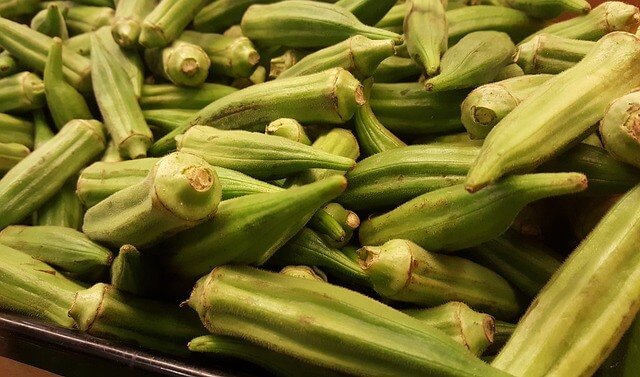
Sourcing Ingredients and Substitutes
While it’s ideal to use authentic Louisiana ingredients, most of these can be found locally or sourced online. If certain items like Andouille sausage or Creole mustard aren’t available, you can substitute with similar products. It’s important to note that while the flavor may differ slightly, it will still result in a delicious dish.
Cajun and Creole Food for Personal Chefs! Here are some recommendations for finding ingredients:
Local Farmers’ Markets:
Supporting local farmers not only helps your community but also ensures fresh and high-quality ingredients. Many farmers’ markets have vendors who specialize in Cajun and Creole products.
Ethnic Grocery Stores:
Look for specialty stores that carry Louisiana products or other ethnic markets that may have similar ingredients. These stores often have a wide variety of imported goods, giving you access to hard-to-find items.
Online Retailers:
With the rise of e-commerce, it’s easier than ever to find authentic Louisiana ingredients online. You can purchase items directly from producers or through specialized retailers who focus on Cajun and Creole products.
Community Supported Agriculture (CSA):
Joining a CSA program is a great way to support local farmers while also ensuring you have access to fresh and seasonal ingredients. Many CSAs offer delivery or pick-up options, making it convenient for home cooks.
Grow Your Own:
If you have the space and time, consider growing some of your own herbs and vegetables. This will not only give you control over the quality of your ingredients but also add a personal touch to your dishes.
Ask for Recommendations:
Don’t be afraid to ask friends, family, or even restaurant chefs for their recommendations on where to find authentic Louisiana ingredients. They may have insider knowledge on hidden gems in your area or online resources that they use themselves.
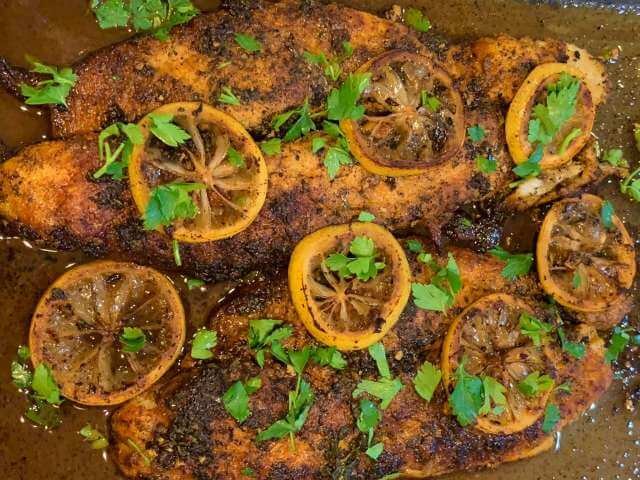
Traditional Cooking Methods
Both Cajun and Creole cuisines feature a mix of cooking techniques, including sautéing, stewing, and frying. One unique method in Cajun cooking is the creation of a dark roux, which forms the base for many dishes. This involves cooking equal parts flour and oil until it reaches a rich, dark brown color. Creole cooking also incorporates roux in some dishes, but tends to focus more on simmering and braising techniques.
Fresh Ingredients
A key aspect of both Cajun and Creole cuisines is the use of fresh, local ingredients. Seafood plays a major role in both, with favorites such as shrimp, crawfish, and oysters commonly used. Other popular ingredients include rice, corn, okra, bell peppers, and tomatoes. Many traditional recipes also call for the “holy trinity” of onions, celery, and green bell peppers.
Spice Up Your Life
Cajun and Creole cuisines are known for their bold use of spices and seasonings. Commonly used spices include cayenne pepper, paprika, thyme, garlic, and onion powder. These ingredients are combined to create flavorful dishes that pack a punch. Cajun and Creole Food for Personal Chefs!
Let the Flavors Marinate
Many Cajun and Creole dishes require marinating or slow cooking to allow the flavors to fully develop. This is especially true for seafood dishes, as it helps infuse the delicate flavors into the dish. It’s also common for some meats to be marinated in a spicy rub before being cooked.
A Fusion of Culinary Influences
In addition to French and African influences, Cajun and Creole cuisines also incorporate elements from Native American, Spanish, and Caribbean cultures. These unique combinations result in complex and diverse flavors that make this cuisine truly one-of-a-kind.
Fresh and Local Ingredients
At The Organic Personal Chef, we pride ourselves on using fresh, locally sourced ingredients in all of our Cajun and Creole dishes. We believe that using high-quality, organic ingredients not only enhances the flavors of our dishes but also supports local farmers and promotes sustainability.
Traditional Dishes with a Healthier Twist
While traditional Cajun and Creole dishes are known for their rich flavors and indulgent ingredients, at The Organic Personal Chef, we put a healthier spin on these classic dishes. Our chefs use alternative cooking methods such as grilling or baking instead of frying to reduce the overall fat content without sacrificing taste.
From Jambalaya to Gumbo: A Taste of Louisiana
Our menu features a variety of Cajun and Creole favorites, from hearty jambalaya to flavorful gumbo. Each dish is made with care and attention to detail, ensuring that every bite is bursting with authentic Louisiana flavors.
The Power of Spices
No Cajun or Creole dish would be complete without the right blend of spices. At The Organic Personal Chef, we use a mix of traditional herbs and spices such as cayenne pepper, paprika, and thyme to add depth and complexity to our dishes. We also offer customizable spice levels so you can choose your preferred level of heat.

Tasting Cajun and Creole Cuisine
These cuisines pack a flavorful punch, with a balance of heat, savory, and sometimes sweet elements. Cajun food is typically spicier than Creole and often contains more pork and crawfish. Creole cuisine, on the other hand, has more of a French influence and is known for its seafood dishes.
Sourcing Local Ingredients
We take great pride in sourcing our ingredients from local farms and suppliers. Not only does this support our community, but it also ensures that our food is fresh and full of flavor. When it comes to Cajun and Creole cuisine, we make sure to use authentic Louisiana spices like paprika, cayenne pepper, and garlic to give our dishes that signature kick.

Cultural Significance and History
Cajun and Creole cuisines reflect the diverse history of Louisiana, combining French, Spanish, African, and Native American influences. Creole cuisine, often considered ‘city food,’ incorporates a wider array of ingredients and complex techniques, while Cajun cuisine, or ‘country food,’ is known for its hearty, rustic dishes. Both cuisines place a strong emphasis on local, fresh ingredients and bold flavors.
Originating from the French-speaking Acadians who were exiled from Canada in the 18th century, Cajun cuisine is rooted in resourcefulness and making do with what is available. This led to the popularization of dishes like gumbo, jambalaya, and boudin – all made with simple ingredients found in Louisiana’s swamplands. Today, Cajun cuisine continues to evolve as chefs incorporate modern techniques and global influences while staying true to its rustic roots.
On the other hand, Creole cuisine originated in New Orleans among French and Spanish colonists who brought their culinary traditions from Europe. It quickly evolved into a fusion of African, Native American, and Caribbean influences, resulting in a diverse and flavorful cuisine. Creole dishes are characterized by the use of aromatic herbs and spices like thyme, basil, bay leaves, and cayenne pepper.
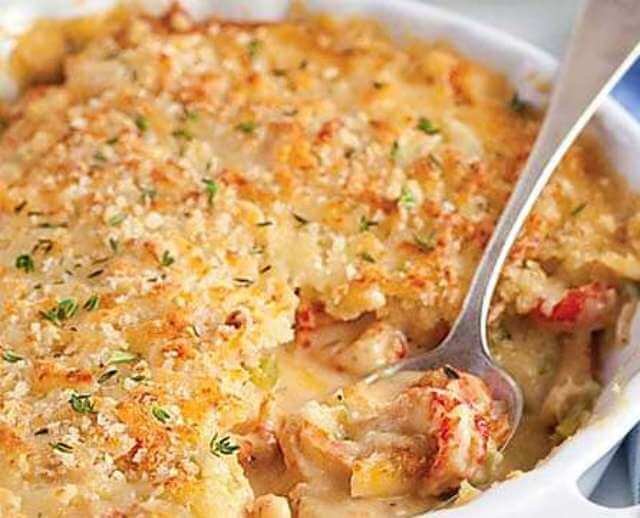
Dietary Considerations
While some dishes can be rich, there are plenty of healthier options featuring lean proteins, seafood, and vegetables. For clients with dietary restrictions or allergies, especially to shellfish, alternative ingredients can be used. I also offer vegetarian, vegan, and gluten-free options. Just let me know your dietary needs and I will make sure to accommodate them in every dish.
Customized Meal Plans
I believe that healthy eating should be accessible to everyone. That’s why I offer customized meal plans tailored to each client’s specific goals and needs. Whether you are looking to lose weight, maintain a balanced diet, or have certain dietary restrictions, my meal plans can help you achieve your desired results while still enjoying delicious food.
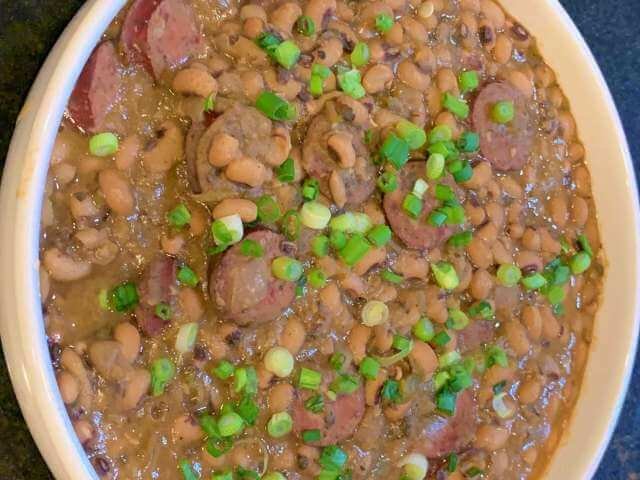
Traditional Accompaniments
Common side dishes include red beans and rice, cornbread, and maque choux (a corn-based dish). Desserts often feature local ingredients, such as pecan pie or bread pudding.
At The Organic Personal Chef, we believe in honoring traditional dishes and accompaniments while also putting our own healthy spin on them. We use only the freshest organic ingredients to create mouth-watering sides that will complement any meal.
Red Beans and Rice:
A staple in Southern cuisine, our red beans and rice dish is made with nutrient-rich brown rice and organic kidney beans. Flavored with herbs and spices, this savory side is both filling and satisfying.
Cornbread:
No Southern meal is complete without a slice of warm cornbread. Our version is made with whole grain cornmeal and sweetened with organic honey or maple syrup. It’s the perfect balance of sweetness and texture.
Maque Choux:
This traditional Cajun dish features fresh corn, bell peppers, onions, and tomatoes all sautéed together with a hint of spice. We use organic vegetables and spices to create a flavorful and colorful side dish.
Collard Greens:
A classic side in Southern cooking, our collard greens are slow-cooked with organic vegetable broth and seasoned with garlic, onion, and smoked paprika. The result is tender greens bursting with flavor.
Sweet Potato Casserole:
For those who love a sweet side dish, our sweet potato casserole is sure to please. We use organic sweet potatoes and top it off with a crunchy pecan crumble for the perfect balance of sweetness and texture.
Coleslaw:
Their coleslaw is not your average deli-style slaw. We mix together organic green and red cabbage, carrots, and onions with a tangy dressing made from organic apple cider vinegar and Dijon mustard. This side dish is refreshing and packed with nutrients.
Roasted Root Vegetables:
A hearty and healthy side dish, our roasted root vegetables feature seasonal produce like organic carrots, parsnips, sweet potatoes, and beets. We toss them in olive oil and herbs before roasting to lock in all the natural flavors.
Quinoa Salad:
For a protein-packed side dish, try our quinoa salad. Made with organic quinoa, fresh veggies such as bell peppers, cucumbers, and cherry tomatoes are mixed in for a burst of color. Topped off with a light lemon vinaigrette dressing, this salad is perfect for a light lunch or as a side to any entrée.
Mushroom Risotto:
Indulge in our creamy and flavorful mushroom risotto, made with organic Arborio rice and a blend of wild mushrooms. Slowly simmered in organic vegetable broth and finished off with parmesan cheese, this dish is sure to be a crowd-pleaser at your next dinner party.
Cauliflower Mash:
For a healthier twist on traditional mashed potatoes, try making a cauliflower mash. Made with organic cauliflower and seasoned with garlic, thyme, and butter, this side dish is just as creamy and delicious as the original but without all the carbs.
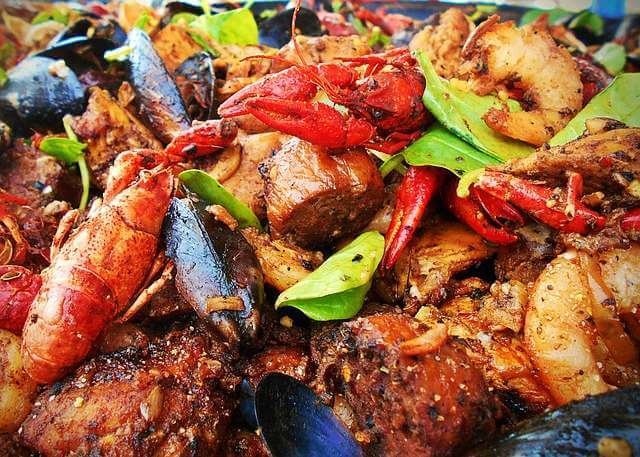
Presentation and Serving
Food is usually served family-style, reinforcing the sense of community that’s integral to Louisiana culture. Instead of individual portions, dishes are placed in the middle of the table for everyone to share. This allows for a more relaxed and communal dining experience, where people can interact and socialize while enjoying their meals.
The presentation of food is also given great importance in Louisiana cuisine. The way a dish looks on the plate is just as important as how it tastes. Chefs take great care to arrange ingredients in an aesthetically pleasing manner, often incorporating colorful garnishes or intricate plating techniques. This attention to detail adds an extra level of enjoyment to the dining experience.

Variations of Cajun and Creole Cuisine
There are many regional variations within these cuisines, each reflecting the unique cultures of different Louisiana communities. But at their core, both Cajun and Creole cuisines rely on a rich blend of French, Spanish, African, and Native American influences. These two styles of cooking may seem similar at first glance, but they each have distinct characteristics that set them apart.
Cajun Cuisine:
Originating from the Acadian people who were exiled from Nova Scotia in the 18th century, Cajun cuisine is known for its hearty and rustic dishes. With an emphasis on locally sourced ingredients such as seafood, pork, and game meats like alligator and rabbit, this style of cooking focuses on simple yet flavorful combinations. Traditional Cajun spices include cayenne pepper, paprika, garlic, onion powder, and thyme.
Creole Cuisine:
Creole cuisine, on the other hand, has its roots in New Orleans and is considered to be the city’s “city food.” Influenced by French, Spanish, African, and Native American cultures, Creole dishes are often more complex and sophisticated than Cajun cuisine. This style of cooking incorporates a wider range of ingredients such as tomatoes, bell peppers, celery, and a variety of herbs like parsley and bay leaves.
Key Differences:
One of the main differences between Cajun and Creole cuisines is the use of tomatoes. While they are a staple in Creole cooking for dishes like gumbo and jambalaya, they are not typically used in traditional Cajun dishes. Additionally, Cajun spices tend to be bolder and more pungent, while Creole seasonings are more subtle and complex.

Equipment and Preparation
No specific equipment is required, but a good heavy-bottomed pot is useful for making roux and stews. Some dishes require advance preparation, like marinating meats or soaking beans.
Here’s a list of some essential tools, utensils, pots and pans often used when preparing Cajun and Creole (Louisiana) foods:
Chef’s Knife: A versatile tool used for chopping, slicing, and dicing ingredients.
Cutting Board: A sturdy surface where ingredients are cut. It helps protect countertops and makes clean-up easier.
Cast Iron Skillet: This heavy-duty pan is perfect for making dishes like blackened fish or cornbread.
Dutch Oven or Large Pot: These are essential for making traditional dishes like gumbo, jambalaya, and crawfish étouffée.
Stockpot: Used for boiling seafood, such as crawfish and shrimp, or making stocks.
Frying Pan: Essential for frying dishes like catfish or hush puppies.
Baking Dish: For casseroles and bread pudding.
Mixing Bowls: Essential for combining ingredients. Used in almost every recipe.
Wooden Spoon: A must-have for stirring. It’s gentle on your pots and pans and doesn’t conduct heat.
Measuring Cups and Spoons: Necessary for accurate measurements of ingredients.
Tongs: Especially useful when grilling or frying, to turn and serve meat without piercing it.
Peeler: Used for peeling vegetables like potatoes or carrots.
Whisk: Useful for mixing, beating, and whipping ingredients.
Grater: Used for grating cheese for dishes or zesting lemons for desserts.
Colander: Essential for draining boiled seafood or pasta.
Seafood Cracker and Picks: These are used for cracking and picking meat from crab, lobster, and crawfish shells.
Mortar and Pestle or Spice Grinder: Used for grinding spices and herbs. Essential for making Creole seasoning.
Remember, the tools you’ll need can vary depending on the specific Cajun and Creole dishes you plan to prepare.
Wondering what tools a personal chef might need? I’ve written an extensive article for you – A Comprehensive List Of Must-Have Tools and Essential Items for the Personal Chef
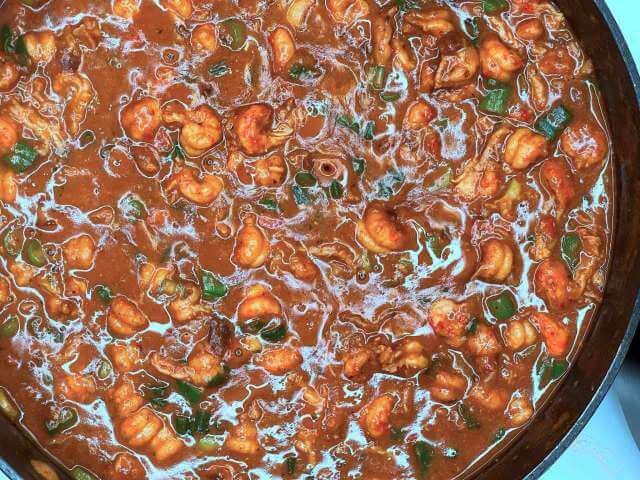
Personalizing Cajun and Creole Cuisine
As a personal chef, you can adapt these dishes to suit your clients’ preferences, whether it’s dialing down the heat, offering vegetarian versions, or incorporating favorite ingredients.
Set yourself apart from other personal chefs by offering a variety of world flavors and foods. by adding Creole and Cajun food to your repertoire you can impress your clients with bold flavors and unique dishes.
Here are some of my favorite tools for providing my personal chef service
As an experienced personal chef, I’ve found that the secret to creating mouthwatering dishes goes beyond just having a passion for food. It’s also about using the right kitchen tools. Today, I’m going to share with you my must-have kitchen items that help me bring my culinary creations to life.
1. Chef’s Knife
The first item on my list is a high-quality chef’s knife. It’s the most versatile tool in my kitchen, perfect for chopping, slicing, and dicing. My preference is for a Global Chef’s Knife, known for the edge and the way they are balanced.
2. Cast Iron Skillet
Next up is a good old cast-iron skillet. From searing steaks to baking cornbread, this pan does it all. I love the Lodge Cast Iron Skillet, which retains heat beautifully and adds a nice crust to anything you cook.
3. Stainless Steel Pots and Pans
A set of stainless steel pots and pans is essential for a variety of cooking techniques. They’re great for simmering, boiling, and sautéing. All-Clad’s Stainless Steel Cookware Set is my go-to choice for its exceptional performance and durability.
4. Immersion Blender
An immersion blender makes pureeing soups, making smoothies, and blending sauces a breeze. I suggest the Braun Multiquick Hand Blender, which is powerful, easy-to-clean, and highly versatile.
5. Digital Thermometer
To ensure perfectly cooked meats every time, a digital thermometer is a must. The ThermoPro TP19 Waterproof Digital Meat Thermometer provides speedy and accurate readings, ensuring your roast chicken or prime rib is cooked to perfection.
6. Silicone Spatula
A silicone spatula is a chef’s best friend for its versatility. It’s heat-resistant, non-stick, and perfect for everything from folding batter to stirring sauces. I recommend the OXO Good Grips Silicone Spatula.
7. Stand Mixer
Lastly, for avid bakers, a stand mixer is a game-changer. The KitchenAid Artisan Series 5-Qt. Stand Mixer isn’t just a pretty face; it makes mixing doughs and batters effortless.
These are the tools that I use daily in my personal chef service. Remember, quality tools make a difference, but they don’t have to break the bank. Start with the basics and add on as you grow more comfortable and adventurous in the kitchen.
Happy cooking!
